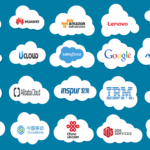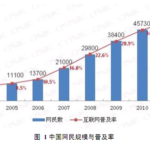What are the key drivers to success on Chinese B2C Market? (1/2)
Few technologies have impacted China as profoundly as the Internet, which has changed almost every aspect of our lives, including the way we communicate with each other, how we keep track of our finances, how we do research, and even where and how we buy things. E-commerce has been growing steadily every year in breadth and depth, since more and more people come to recognize its convenience, its ability to offer a quick response to requests and its immense variety of products or services. In 2008-2012, Chinese online shopping market size ascended from RMB 128.2 billion to RMB 1, 303.0 billion. Wherein, according to the China E-Commerce Research Center (CECRC), 2012 first quarter China B2C sales totaled RMB 233.6 billion, a 42.8% increase from the first quarter of 2011. By June 2012, the sales totaled 511.9 billion RMB, which shows a growth of 46.6%. In H1 2013, the e-commerce market valued RMB 789.21 billion, up 41.2% year on year. The B2C market scale hit RMB227.86 billion, accounting for 35.2% of the total online shopping market size.
We will primarily concentrate on B2C sector. After a brief discussion of enablers of success in B2C sector we will illustrate two particular companies, Tmall and Shangpin, as a successful example and a failure example, respectively. The specific business models and reasons of success and failure will be discussed in detail in this section as well.
Enablers of success in B2C sector
The technology-driven initiatives of Internet has a significant impact on the ways businesses interact with each other and with consumers. This has not only created an environment in which businesses are able to perform at a higher level, but also it has created many new business opportunities. Even so, not all companies are destined to succeed. Despite the weak economy, a more fundamental reason is whether its business model or strategy can add value. Generally speaking, there are two drivers of success, which are price efficiency and lower transaction cost. Trust & Confidence, rich variety and convenience of shopping, in turn, contribute to the reduction of overall transaction cost.
Price Efficiency
One of the most important motivations that drive people to go shopping online is to get a better price. Thus, the most successful companies are more likely to be those able to hammer down costs at each point in the value chain. Lower cost enables the companies to adopt more aggressive price strategies. By offering the lowest possible price, these companies gain market share through price advantage.
Lower transaction cost
However, price is not the only element that people care about. Transaction cost should be taken into account carefully as well. For instance, few people would like to spend a whole day to buy a toothbrush, even though it is very cheap. Additionally, one would extremely hesitate to purchase a LV handbag if the handbag could be a fake one, even though the probability is not very high. Therefore, the companies that can reduce the overall transaction cost are more likely to excel among their rivals.
Trust & confidence
In general, online services and products are not immediately verifiable, along with the paucity of rules and customs in regulating e-commerce, trust hence should be more important in e-commerce than in traditional commerce. The question put to traders who are aiming to succeed is how to develop trust and confidence in light of the risks inherent in B2C e-commerce.
Rich variety
Another reason why people would like shop online is that some particular products are not easily accessible due to geographic restrictions or that some products can barely be found in traditional shops. Indeed, the immense varieties of products will contribute to the reputation of the B2C platform which leads to a solid customer loyalty.
To know more about store-checks, consulting in China or e-commerce in China















